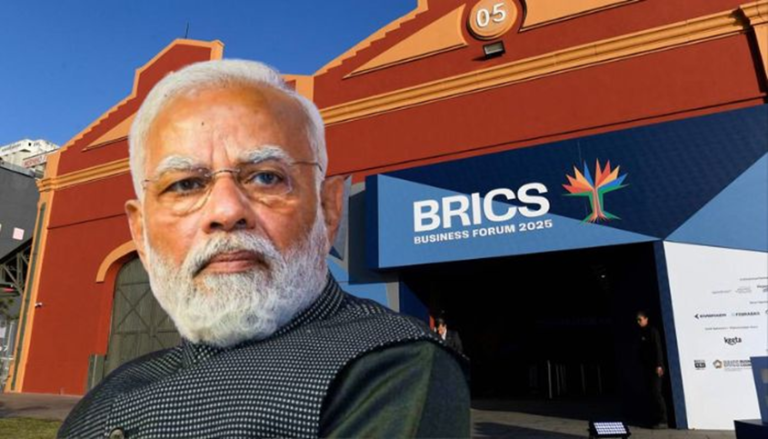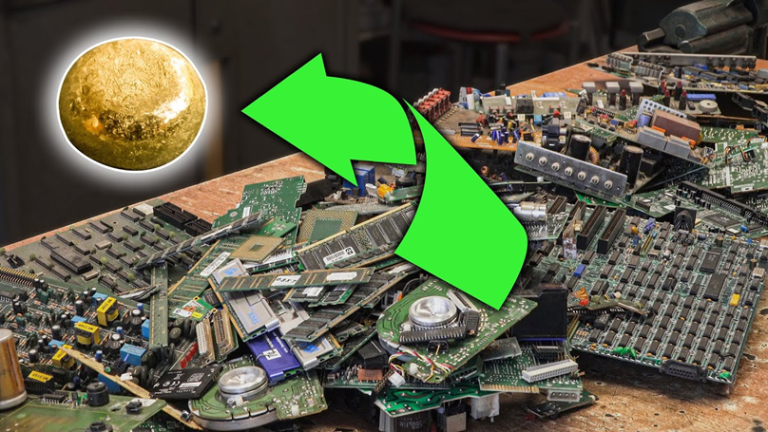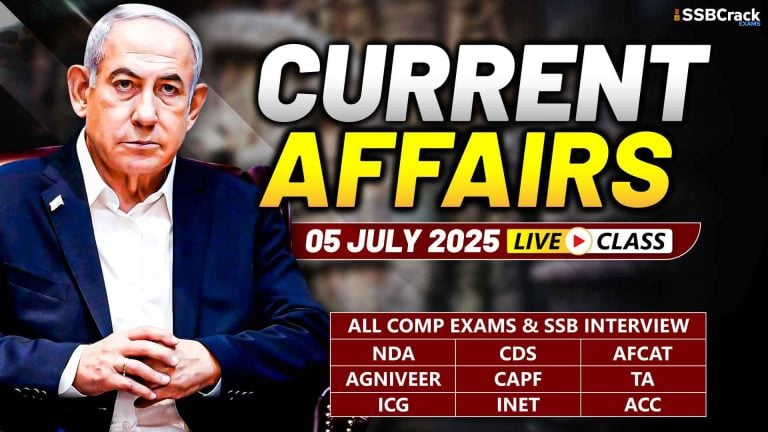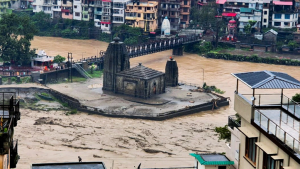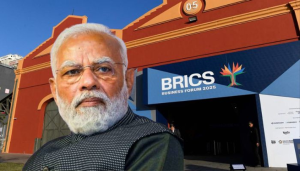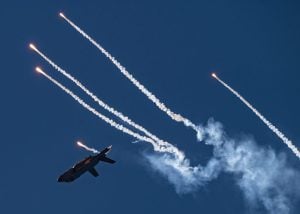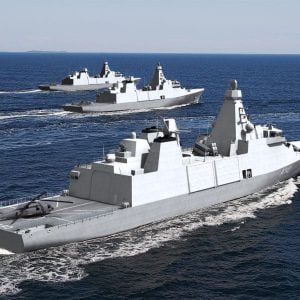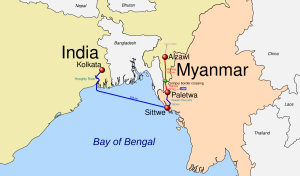LAC stand-off: India now holds some solid bargaining chips in various areas
- As foreign minister S Jaishankar prepares to meet his Chinese counterpart Wang Yi in Moscow, the clashes on the LAC on Monday where Indian troops held their positions on the heights on the south bank of Pangong Tso have given India some solid bargaining chips in the difficult negotiations to defuse the standoff.
- Though the clashes lend credence to India’s stand that “deep conversations” are necessary to resolve the situation and the discussions may not deliver immediate results, changes on the ground, where Indian troops have surprised PLA in actions that played out over the August 29-30 week end, have subtly altered the dynamics ahead of the meeting.
- Official sources here pointed to the unusual speed with which the Chinese side issued a statement past 3am Beijing time accusing India of a “serious violation”. The statement followed a resolute Indian response to the Chinese advance which made it plain that the occupation of the heights was not a passing matter.
- The signal to China was that either use of force would be needed to evict the Indian troops or negotiations were an option to find a way out and de-escalate tensions. For the moment, it has sharpened the need for a political understanding on the growing boundary crisis. The Indian side feels the meeting may not throw up a re solution to the border crisis.
- In the past few days, both sides have been mirroring their public statements, indicating how difficult it would be to achieve common ground. There is also an assessment on the Indian side that China has a definite goal of pushing the LAC westwards and will not be willing to concede recent advantages gained by the Indians. This is also tied to national honour — which means the two sides may be digging in through the winter.
- Here, India may have a slight advantage given its experience, but China has deeper pockets. On Tuesday, the MEA pushed back against the Chinese propaganda system, by denying their attribution to NSA Ajit Doval. In a statement, an MEA spokesperson said: “We have seen reports in Chinese state media, including in China Daily and Huanqiu Shibao (Global Times), which had attributed some comments to NSA Ajit Doval.
- These reports are completely false and are not based on facts.” Sources said the Chinese would have preferred a situation where they were in a more advantageous position tactically. But India has strengthened its positions at the LAC, which has contributed to China’s anger. That may make it easier during the political negotiations but could just as easily harden Chinese positions.
China using Pakistan for military logistics facilities: US report
- According to the US Defence Department’s report published last week, the PRC is seeking to establish a robust overseas logistics and basing infrastructure to allow the PLA to project and sustain military power at greater distances.
- “Beyond its current base in Djibouti, the PRC is highly likely already considering and planning for additional overseas military logistics facilities to support naval, air and ground forces. The PRC has likely considered locations for PLA military logistics facilities in Myanmar, Thailand, Singapore, Indonesia, Pakistan, Sri Lanka, United Arab Emirates, Kenya, Seychelles, Tanzania, Angola and Tajikistan,” read the report.
Chinese troops carried rods, spears and clubs in aggressive approach towards Indian post: Govt sources
- Chinese troops carried rods, spears, clubs and sharp weapons in trying to close in on an Indian position in Mukhpari area of Rezang-La ridgeline in eastern Ladakh on Monday evening, government sources said on Tuesday. As tension escalated at the Line of Actual Control (LAC), the sources said around 50-60 soldiers of Chinese People’s Liberation Army(PLA) approached the Indian post in the southern bank of Pangong lake area at around 6pm but the Indian Army personnel posted there strongly confronted them, forcing their retreat.
- The Chinese troops had mounted a savage attack on Indian soldiers with stones, nail-studded sticks, iron rods and clubs during the Galwan Valley clashes in eastern Ladakh on June 15 in which 20 Indian Army personnel were killed. On Monday evening too, the Chinese troops were carrying rods, spears, clubs and sharp weapons, the sources said.
- When the Indian Army forced the Chinese troops to return, they fired 10-15 rounds in the air to intimidate Indian soldiers, in the first use of firearms along the LAC after a gap of 45 years. The previous instance of shots being fired at the de-facto border was in 1975. The sources said Indian troops did not use any firearm.
- They said the attempt of the Chinese troops was to remove Indian Army from the strategic heights in Mukhpari peak and Rezang-La areas. The PLA has been eyeing to capture the strategic heights in the last three-four days, the sources said, adding the Chinese troops damaged an iron fence on Monday evening which was put up by Indian troops in the area.
- India continues to dominate strategic peaks around the southern bank of Pangong lake area overlooking key Chinese formations in the Moldo area. The PLA late on Monday night alleged that Indian troops crossed the LAC and “outrageously fired” warning shots near the Pangong lake. The Indian Army on Tuesday rejected the charges.
An Air Force One that flies at five times the speed of sound?
- There could be a supersonic Air Force One prototype airplane as early as 2025, with the US Air Force getting busy awarding development contracts.
- California start-up Exosonic is working on a low-boom supersonic Mach 1.8 twinjet which caught the eye of the US Air Force’s Presidential and Executive Airlift Directorate (PE).
- It was announced last week that Exosonic has been issued a contract to develop supersonic executive transport that could be used as Air Force One.
- That is on top of the news last month that Atlanta-based Hermeus Corporation, which is working on a hypersonic 20-seater that promised to deliver passengers from New York to London in 90 minutes, has received investment from the same directorate. Hermeus is partnering with the US Air Force and PE to develop its Mach 5 craft, pictured at the top of the article, in order to support the presidential and executive fleet.
- After more than five decades and 11 administrations, President Donald Trump was planning to give the livery of the presidential Air Force One plane a patriotic-themed makeover.
- Now the United States administration behind Space Force is taking an equally ambitious approach to its top-league transport.
- The Exosonic’s 70-seater boasts a 5,000-nautical-mile range and, thanks to boom-softening techniques, it should be able to fly overland at almost twice the speed of sound without upsetting residents down below.
- “The future for global rapid passenger travel is low-boom supersonic flight,” said Exosonic’s CEO, Norris Tie, in a statement. “Low boom allows travelers to fly at supersonic speeds without generating disruptive booms for those on the ground.”
- So what kind of speeds are we talking? Well, Mach 1.8 is around 1,381 miles per hour (2,222 kilometers) and so Exosonic’s craft promises to halve cruise times compared to existing aircraft.
- Exosonic will also be working with the US Air Force to modify the aircraft cabin so it has the necessary communications equipment security measures, and the kind of classy fittings that will allow US leaders and their guests to work and rest on board.
- A US Air Force One supersonic prototype could be rolled out by 2025.
- Exosonic co-founder and CEO Norris Tie confirmed that the company expects its supersonic plane to be flying by the mid-2030s.
- CNN Travel reported on Hermeus in 2019, when the aerospace company was attracting attention for its plans to develop a craft twice as fast as Concorde, the supersonic plane that made its final transatlantic flight in October 2003 and travelled between New York and London in under four hours.
- Hypersonic travel is generally regarded as reaching speeds of Mach 5 or above, or five times the speed of sound. Hermeus successfully tested a Mach 5 engine prototype in February this year, having designed it from scratch.
- “At Hermeus, we are looking to build high-speed aircraft faster and cheaper than has ever been done,” Skyler Shuford, Hermeus co-founder and chief operating officer says. “We built a Mach 5 engine prototype in only nine months and for less than two million dollars.”
- The Hermeus founders include former employees from SpaceX, Elon Musk’s rocket start-up, and Blue Origin, Jeff Bezos’ secretive space venture. All four founders worked together at Generation Orbit, where they worked on the development of a hypersonic rocket-plane and the US Air Force’s newest X-Plane.
- While the contracts are a big leap forward for Exosonic and Hermeus, Paul Bruce, senior lecturer in the Aeronautics Department at Imperial College London, sounded a note of caution when CNN spoke to him about the Hermeus project in 2019.
- “The biggest challenge for hypersonic flight is propulsion,” he said. “We’ve sent small vehicles up and flown them hypersonically using scramjets, an advance type of jet engine. This is quite experimental, and we’ve got a long way to go before we see these on a passenger aircraft. There are many other difficulties with flying that quickly routinely — we do have the engineering capabilities to do it.”
- “The bigger issue is the financial and perhaps the environmental issue; flying that fast will burn an awful lot of fuel and will be much more inefficient than flying slowly. But if there is a market for it, I don’t have any doubt that we could build one of these types of planes.”
- Music mogul and entrepreneur Kanye West famously pitched the Apple-backed iPlane-1 to Donald Trump in 2018, as a hydrogen-powered alternative to the current Air Force One.
- As a 2020 US presidential candidate, he might well be watching developments with interest, although as reported this week, he has only made the ballot in 10 states, making it mathematically impossible for him to become the next president.
- Hermeus’s Shuford, meanwhile, emphasizes to CNN that transporting presidents at hypersonic speeds is not his company’s all-consuming goal.
- “While a potential Mach 5 Air Force One is very interesting (and awesome) to us, we are laser-focused on supporting the Presidential and Executive Airlift Directorate by integrating and demonstrating their needs with our first aircraft over the next few years,” says Schuford.
- “For us, it’s not just about making a fast plane; we aim to firmly anchor the US as a leader in high-speed flight.”
China Rattled by News of Indian Warship Presence in South China Sea: Chinese news agency
- The Chinese Communist Party’s (CCP) mouthpiece Global Times recently raised the issue of Indian Navy warships operating in the South China Sea in an article titled ‘Is South China Sea card useful to New Delhi?’ This was in response to reports in the Indian media that India had ‘stealthily’ deployed a warship in the South China Sea soon after the Galwan clashes on 15 June.
- Global Times Editor Hu Xijin, adrift on a sea of hyperbole, provided a shrill preface to the article, asking readers how to interpret these Indian moves….Is New Delhi playing a so-called South China Sea card to pressure China? The views of experts were thereafter laid out as a message to India and it’s Navy. The article makes interesting observations and indicates that CCP is rattled and is cognizant of its soft maritime underbelly.
- Global Times contends that the deployment of Indian warships to the South China Sea is unique to the current India-China situation. Nothing could be further from the truth! Indian warships have visited South China Sea and even China on numerous occasions, the most recent being the highly publicized visit of frontline stealth destroyer Kolkata to Qingdao in April 2019. This warship transited through the South China Sea, crossing through the Taiwan Strait en route to Qingdao. The unique nature of the maritime medium permits inclusive utilisation of the global commons, much unlike the restrictive regime illegally being attempted by CCP’s Navy in the South China Sea.
- The article highlights Indian warships’ contact with its US counterparts over ‘secure communication systems’ and interprets this as India’s eagerness to give the impression that India and US are ‘allies’ in the South China Sea and IOR.
- India has friendly relations with the global comity of nations, and especially with China’s immediate neighbours. India has also fostered strong partnerships with the top economies of the world, except for China. Engagement and exchange of pleasantries between warships of friendly countries on the high seas should not be viewed by Global Times as India developing allies against the CCP, rather it should be viewed as India’s acceptability to all most nations of the world, excluding China and Pakistan.
- The ongoing situation in the Indian Union Territory of Ladakh has been described as a ‘border dispute’. However, India stands firm in its resolve that the situation is another manifestation of CCP’s misplaced sense of territorial irredentism. India has no use for ‘distracting’ the CCP as stated in the article; rather it is to be expected that the government of the day would utilise all instruments of national power to restore status quo ante.
- Naive arguments about an India-US axis against the CCP Navy in South China Sea is also a reflection of CCP’s vulnerabilities at sea. The coincidence of the Indian media report just days after the over-hyped test of the DF-21 and DF-26 missiles by the CCP Rocket Force seems to have visibly upset Global Times and its benefactors.
- Another constant thread in the article is a fear that India will escalate ‘adventurous actions in the South China Sea’. India is, however, a country with an ancient civilizational background, with no history of practicing expansionism. CCP’s China is, however, a different tale. Island nations of the Pacific, ASEAN neighbours, Central Asian countries and even the Galapagos Islands, are all victims of CCP’s thirst for expansionism; a rather discordant note for an ancient civilisation to be pursuing.
- While 2020 has been a rough year for the whole world due to the Wuhan virus, CCP has utilised this period to further its claim on Japanese Senkaku islands; regularly violate South Korean and Taiwanese airspace using fighters, bombers and reconnaissance aircraft; attack Vietnamese fishing boats in the South China Sea; pressurise Indonesia, Philippines and Malaysia in the South China Sea with exaggerated claims; carry out targeted cyber-attacks against Australia; claim the Russian city of Vladivostok; usurp large tracts of land in Nepal; claim the Sakteng sanctuary in Bhutan, and now nearly half of Tajikistan
- The list is quite endless if one were to include CCP’s attempts to intimidate and usurp territory and strengthen influence across smaller Asian and African countries and their governments.
- Lastly, the article labours on Indian Navy warships taking actions to undermine CCP’s territorial sovereignty in the South China Sea, and also sending one of its aircraft carriers to the region. The article glosses over South China Sea Arbitration ruling of Permanent Court of Arbitration (case number 2013-19), which was delivered under Annex VII to UNCLOS, 1982. This seminal judgement states that there is no legal basis for CCP’s expansionist ‘9-dash line’ and that CCP is violating its obligation of refraining from aggravating the situation.
- On the other hand, to enhance security and safety of international shipping passing through the global commons, and on request from friendly nations, the Indian Navy has been providing HADR assistance, joint EEZ patrols, hydrographic surveys, pollution response, search and rescue etc. These missions have been an intrinsic part of India’s outreach philosophy and Indian naval warships have carried the message with their visits to over 100 countries in the past 75 years, rekindling old ties and establishing new ones.
#KnowYourArmy – MCEME, Secunderabad
- In July 1946, numbers 4, 5, 8, 9 and 10 IEME Training Centres were amalgamated and reorganized to form IEME School at Kirkee commanded by a Lieutenant Colonel in the area previously occupied by 4 IEME Training Centre. The first officer to command this School was Lieutenant Colonel RHYS Jones (REME). The School was then organized as Headquarters and three technical wings viz, General Engineering Wing for vehicles, Armament and Instrument Wing and Telecommunication Wing. In addition, the School had a Cell attached to 1 Engineer Equipment Workshop IEME, Kankinara to train other ranks on Engineer equipment.
- The School was controlled for all purposes by the DME except for local administration. Officers and other ranks who opted for Pakistan left the School in the latter half of 1947 and were replaced by personnel from Chaklala. In January 1949 there were 27 young officers and nine officer cadets undergoing basic (two months) course and eight officers undergoing training in Armament and General Engineering Wing. The first Engineer Equipment Mechanics Course was run at the Engineering Equipment Cell at Kankinara in 1951.
- In 1948-49, when the Directorate of Technical Training was formed in Military Training Directorate, the School was classified as a Category ‘A’ establishment. The control, less that of local administration, became the responsibility of the Military Training Directorate under General Staff Branch. The School during training year 1951-52 trained 107 officers, 68 Junior Commissioned Officers (JCOs) and 463 Other Ranks (OR). In 1952 it was decided to move the School to Secunderabad. Colonel PSG Trivedi assumed command on 31 December 1952 as the first Indian Commandant of the School and moved the School to Secunderabad.
- A number of minor alterations were made to the buildings to make them suitable for use as an instructional institution. An old barrack was converted into Officers’ Mess which later became the Corps Officers’ Mess. The open-air theatre was built in 1957 and a number of other major works projects were initiated for the School to make up deficiencies in offices, instructional blocks and living accommodation. The foundation of the present-day library and Corps Archives and Museum was laid by then DEME, Major General Harkirat Singh.
- The quality of training was also improved during this period by laying emphasis on production of training literature and training aids. A number of training films were procured for the first time. The training output for 1957-58 was a total of 1,228 all ranks. In pursuance of the then DEME’s directive on training, the syllabi of long technical courses were revised to lay emphasis on theory and engineering practices in design of equipment. This ensured that the students acquired a sound technical background to meet new challenges posed by gradual introduction of new sophisticated equipment in the Army and great developments in engineering technology in the fifties.
- In keeping with this concept, the nomenclature of the courses for officers were changed. General Basic Officers’ Course was re-designated as the Young Officers’ Course; Telecommunication Officers’ Course as Advanced Electronics Engineering Course; Armament Officers’ Course as Advanced Armament Engineering Course and the General Officers’ ‘A’ Vehicles Course as Advanced Mechanical Engineering Course, with generally longer durations.
- Peace Establishment of the school was revised in June 1960, increasing its capacity to train 800 students at any one time as against the earlier capacity for 640 students. The command of the School was raised to that of a Brigadier and authorised a staff of 52 officers and 949 all ranks including civilians.
- The requirement for proper management of resources to meet the needs of the field army, both in peace and war, had been under discussion for some years and a need was felt for formal management training. One of the most significant decisions in 1960 was the setting up of a Tactics and Management Wing at the School. The credit for initiating teaching of modern management techniques in the Indian Army belongs to Corps of EME. EME School had the honour of being the first school of instruction in the Indian Army to start such a course.
- The school was upgraded to the status of a college in 1967 and renamed as Military College of Electronics and Mechanical Engineering with three faculties viz, Faculty of Electrical and Mechanical Engineering (FEME), Faculty of Electronics (FEL), and Faculty of Industrial Engineering and Logistics Management (FILM). In 1972, FILM was reorganised and renamed as the Faculty of Industrial Engineering and Tactics (FIET). A new faculty, Faculty of Aeronautical Engineering (FAE) was added in 1986 to train officers and personnel below officers rank in order to meet the challenges confronting the Corps of EME due to formation of Army Aviation Corps. In the year 2000, a Cadets Training Wing was added to train Gentlemen Cadets of the newly introduced 10+2 Technical Entry Scheme (TES).
REVIEW QUESTIONS
- ‘Military and Security Developments involving the People’s Republic of China 2020’ is published by which department of the US government?
- Department of Security
- Department of Defence
- Department of Finance
- Department of State
ANSWER: B
- Air Force One belongs to
- USA
- UK
- China
- Germany
ANSWER: A







